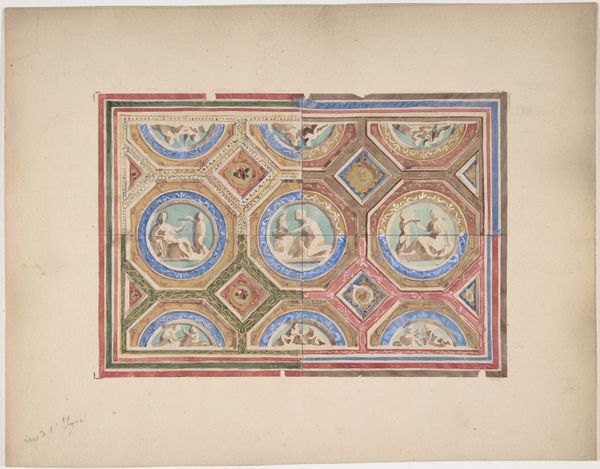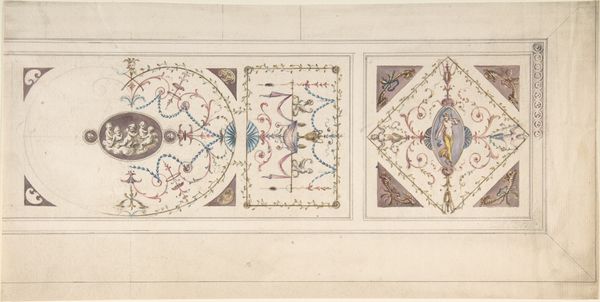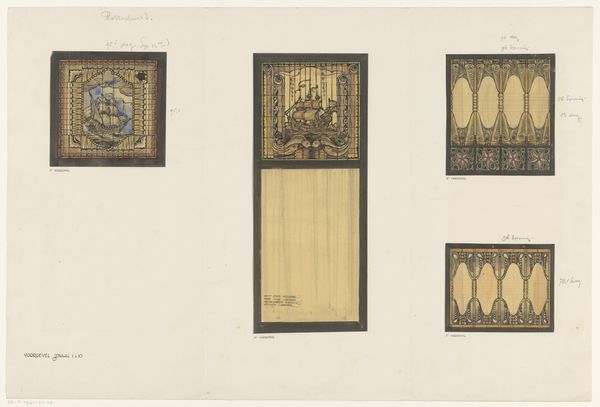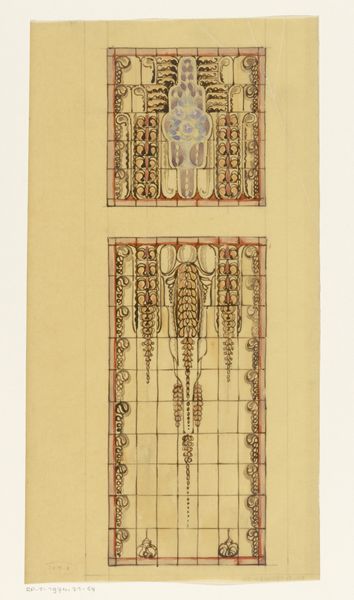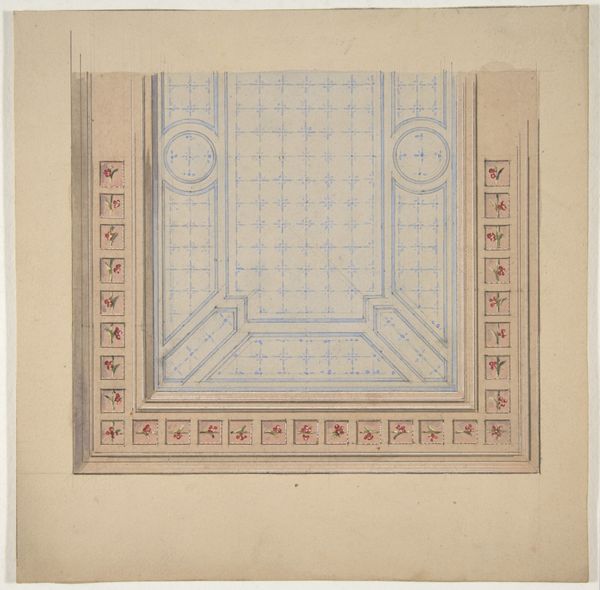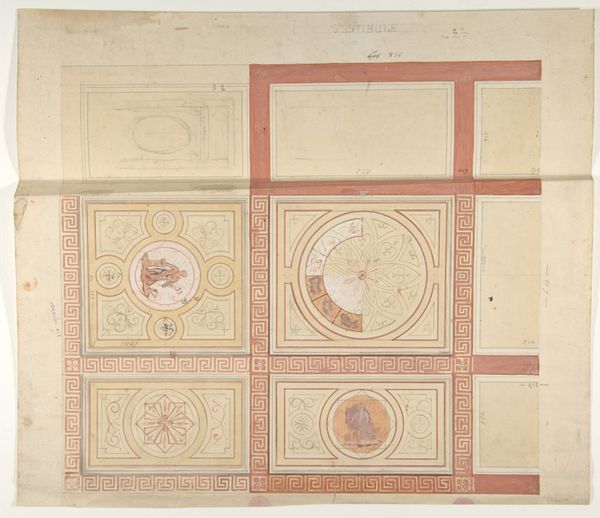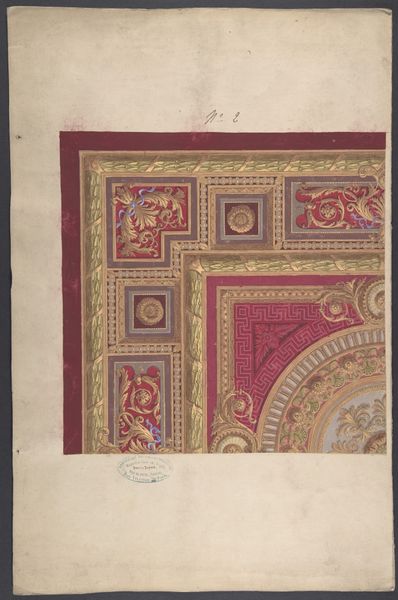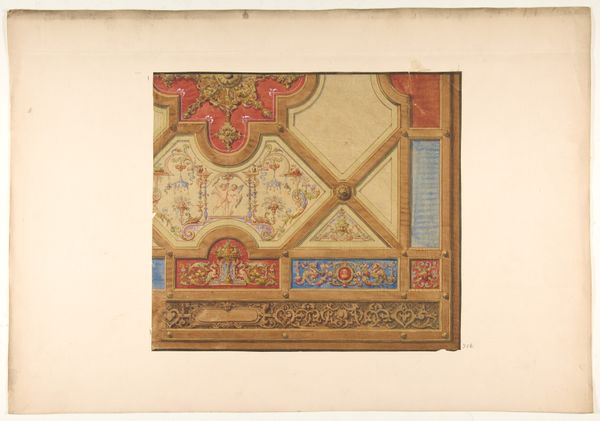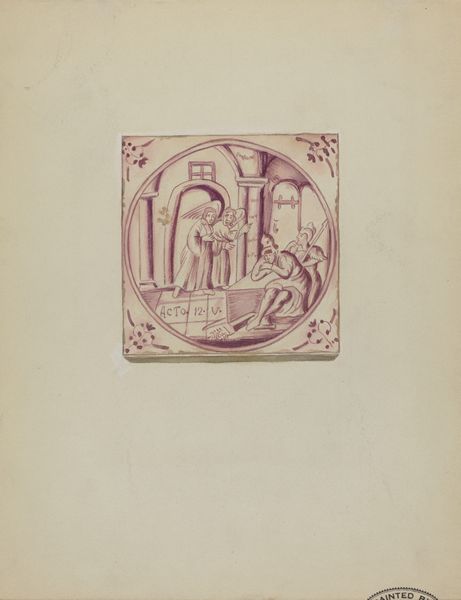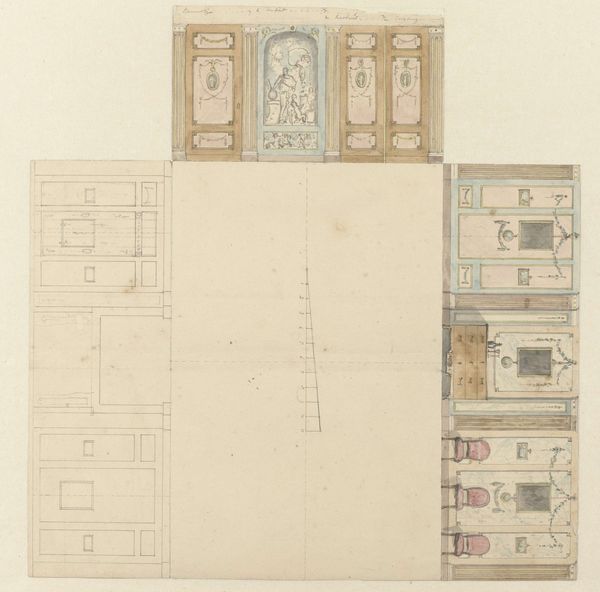
Ontwerp voor de omslag van een programma van het Concertgebouw 1878 - 1938
0:00
0:00
richardnicolausrolandholst
Rijksmuseum
drawing, graphic-art, mixed-media, paper, ink
#
drawing
#
graphic-art
#
aged paper
#
mixed-media
#
toned paper
#
light pencil work
#
art-nouveau
#
ink paper printed
#
old engraving style
#
retro 'vintage design
#
paper
#
personal sketchbook
#
ink
#
geometric
#
ink colored
#
sketchbook drawing
#
decorative-art
#
sketchbook art
Dimensions: height 385 mm, width 544 mm
Copyright: Rijks Museum: Open Domain
Curator: Here we have Richard Nicolaüs Roland Holst’s “Ontwerp voor de omslag van een programma van het Concertgebouw,” a design for a Concertgebouw program cover, created sometime between 1878 and 1938. It's a mixed-media drawing combining ink, pencil, and graphic elements on paper. What are your initial impressions? Editor: It strikes me immediately as a celebration of craft itself. The visible pencil lines, the layering of ink washes—it’s all very upfront about its construction. Not trying to hide the hand of the artist at all, embracing the process of making. Curator: Indeed. Roland Holst was deeply involved in the Dutch Arts and Crafts movement. This piece reflects that, showcasing a return to handcrafted design against the rise of industrial printing. He wasn't just creating an image; he was making a statement about the value of artistic labor. Editor: Absolutely. You can see it in the geometric framework contrasting with the more fluid, figurative panels. It’s not just decoration; it's an argument for integrating artistry into the everyday, accessible to all patrons attending concerts. The materials themselves speak to that intention—humble paper, accessible ink. Curator: The design also nods to the social function of the Concertgebouw itself. The images, possibly allegorical, suggest music's role in cultural life and perhaps even national identity, considering Amsterdam is prominently featured. The Arts and Crafts movement also saw art as a tool for social betterment. Editor: Look closely and it is obvious that this image presents questions of access and class too. Who were these concerts for? And who had the leisure to appreciate this decorative artwork in that period, with these geometric features which clearly take cues from the prevailing architecture in the 20th century? The concert halls themselves catered to very specific socio-economic profiles and sensibilities. Curator: A fair point. The design’s overt aestheticism might have, ironically, appealed more to a certain educated elite. Still, Holst’s intention to elevate design for everyday use aligns with broader socialist ideals present within the Arts and Crafts ethos. Editor: And even if it ended up mainly gracing the hands of a privileged few, its material qualities ensured its place as accessible printed matter; made cheaply, consumed widely, in service to a greater cultural agenda! Curator: It is remarkable how much one can glean from such a seemingly simple design—its function, context, and the socio-political ideals of its creator. Editor: Indeed, seeing art as both a product and a cultural carrier makes us more attuned to these visual objects' enduring material impact, then and now.
Comments
No comments
Be the first to comment and join the conversation on the ultimate creative platform.
